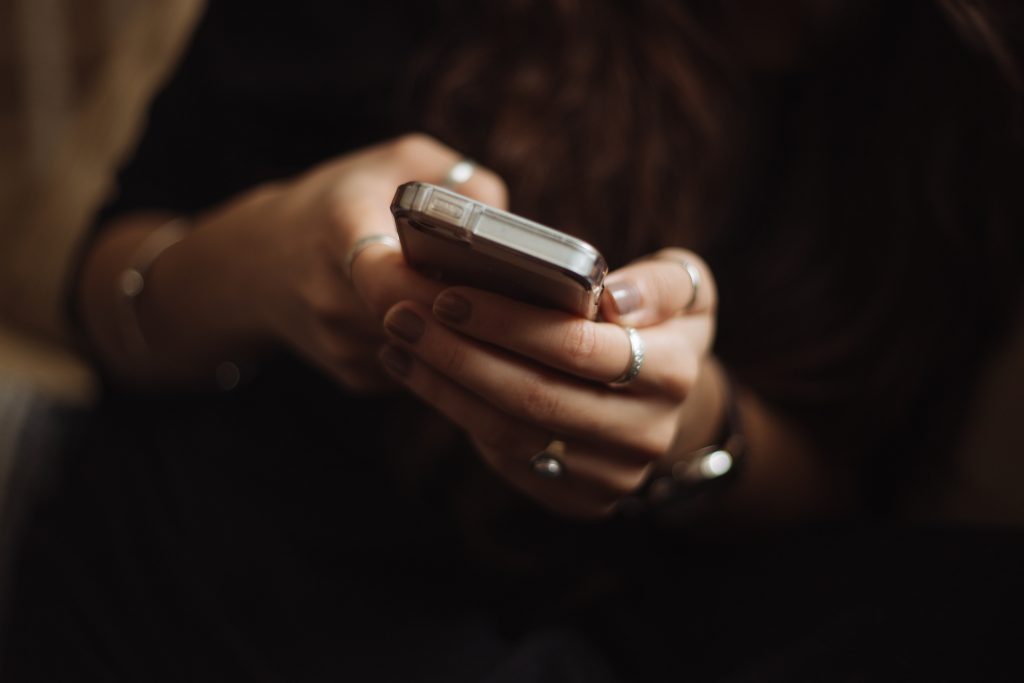Why SMS Should Be On Every Marketer’s Radar.

First of all, hello everyone. A big thanks to Matt and the team at Fly High Media for asking me to write up a guest post for the blog. I’m Liam and I work as Head of Marketing at Reach Interactive. We’re a UK-based SMS marketing provider. During this post, I’m going to dive into the value of texting customers and how to get started…
What makes marketing both exciting and challenging is that it is ever-changing. Already this year, we’ve watched apps like Clubhouse, Hive (remember that?), and even Bebo 2.0 entering the fold with a bang. That’s three new platforms to add to an already saturated mix of social platforms.
While these new sites provide joy and excitement among consumers, they can give us marketers a big headache. Are they a quick trend that will disappear in six months? Do we need to incorporate them into our long-term strategy? With so much choice, it has become harder to both split our time, create suitable content, and even locate prospective customers.
So, it always surprises me when tried and tested marketing channels like SMS marketing get overlooked. When it comes to mobile marketing, no other channel has stood the test of time quite like the good old fashioned text message. The fact that the first SMS was sent in 1992 and it’s still growing today as a marketing channel speaks volumes. At least to me personally, anyway.
The benefits of using SMS
There are quite a few benefits of using SMS as a marketing channel, and I’ll dive into a few right here. The first and most obvious benefit that is always overlooked is that it doesn’t require a download. All of the social media channels that I mentioned above, alongside many other social channels, require users to go into an app store, make a download, and then create an account.
Let’s take Instagram for example. The platform currently has 30 million users in the UK . Yet, 95% of people in the UK own a mobile phone. So, why would we exclude that group of people from our marketing comms that don’t use social media or perhaps have a smartphone with easy access to email?
The numbers back this up too. There is one statistic that is always mentioned in the SMS marketing industry and it’s worth bringing up here too. Text messages have an open rate of 98%. To me, that’s insane. How many other channels do you have that’ll guarantee that almost all of your recipients will read it?
I’m confident in saying that the answer is probably zero. For example, when we look at email, open rates usually reach 15-25% So, I’d make an argument that even a small SMS list can be much more effective than other channels.
The reason why SMS has unmatched open rates is that customers trust it and it’s personal. Sure we get occasional spam, but for the most part, it is a tried and tested method that consumers have been using for almost 30 years. They trust it when sending important and sensitive info to friends or businesses alike. Businesses can really take advantage of that by sending personalised offers and updates to their customers (in moderation, of course).
One final thing to mention is that SMS wears multiple hats. While lots of businesses use it to send out promotional offers, it can also be used for after-sales support, relationship building, and lots more. How many channels out there allow you to send a 20% discount, send delivery updates, and answer any queries that prospective clients may have?
How SMS has changed
Back in 2018, there was a lot of concern about GDPR and how it would impact marcomms channels like SMS and email. Would businesses still be able to send promotional messages in bulk? Do we need to get customers to opt-in again? And, so forth.
Rewind five to ten years ago, lots of businesses would purchase a large data list from questionable websites. They’d then send out a mass text message offer to thousands of people that had never heard of their brand. In my opinion, that’s just bad marketing.
So, what actually happened is that GDPR helped to regulate the industry. Businesses that take advantage and exploit their customers or prospects now get punished, and that’s a good thing. As a result, SMS has become a very effective bottom-of-the-funnel channel that can be used to encourage existing customers to make repeat purchases and feel loved by brands. No more spamming is a win-win for everyone.
Another positive is that brands have become more conscious about the communications that they are sending out. They’re thinking about the call-to-actions that they’re including and how customers will react when they receive messages.
More businesses are also including a double opt-in process and making it clear to subscribers that they can opt-out at any time. Again, this is a good thing. I’ll take 500 SMS subscribers that love to receive our messages over 10,000 social media.
How to grow your opt-in list
One of the bigger hurdles for businesses that want to start sending text messages is that they don’t have any customer phone numbers. Don’t let that put you off. Admittedly, starting anything from zero can be challenging and requires hard work but this shouldn’t be a reason to discard SMS as a channel.
And, ultimately, any channel that allows you to own your own data is a good thing. What happens if the social media platform that has your biggest follower base becomes unpopular in a few year’s time?
Following on from that, lots of businesses also tell us at Reach that they have lots of customer emails so they’d rather focus on that. My answer to that comment is why not use your large email list to promote your SMS club and get customers to opt-in to both?
Having an SMS and email list gives you lots of flexibility. Want to send a quickfire promotion that jumps on a social media trend? SMS is perfect for that. Want to design a nice newsletter that uses cool artwork? Stick with email. But, to pick one or the other seems silly to me.
Moving away from email, there are lots of ways that businesses can grow their subscribers. The most obvious answer here is social media. Use your social media channels to promote your SMS club and the benefits that come with opting-in. If you can offer a welcome discount to any new subscribers then that’s a great place to start.
And, the key thing here is to make it easy. Post a link to your website opt-in page or a picture that contains your five-digit short code which customers can text (for example, text opt-in to 12345). Don’t overcomplicate it with too many steps or benefits.
Another obvious channel that can help when growing subscribers is your website. Most businesses are probably collecting telephone numbers during the checkout process, so why not add a simple checkbox that asks customers if they want to opt-in to your discount club?
Similarly, if you do have an SMS opt-in offer then make that visible to website visitors. An extra 10% off their purchase could be the difference between a conversion or not. Sure, you’ll lose out on the 10% but that offer could be the difference between a one-off purchase and a loyal customer that makes purchases in the future directly from your SMS offers.
Finally, let’s go back to my comment about using shortcodes. Customers can opt-in to your SMS list by texting a keyword to a five-digit number. How easy is that? There’s no reason why every single one of your employees cannot remember that number and share it with both customers and even family or friends.
Additionally, you can promote that number via audio. For example, let’s say that you’re invited to be a guest on an industry podcast. You can close out the episode by telling listeners to text your five-digit code if they’d like to receive exclusive discounts. This comes across as organic because you’re giving something back to subscribers.
How to use SMS creatively
One stereotype that I’m hoping we’ll move away from is that SMS is a boring channel. Sure, channels like TikTok allow you to be more creative but there are lots of ways that you can spark engagement via text message. Earlier this year, I wrote up a blog post that shared 12 creative ways that brands have used SMS recently. I’ll share a few of them here.
Probably the most impactful was a service by Judy. They recently launched a text service that provides updates on emergencies and aims to educate consumers on what to do when a crisis strikes. Saving lives one text at a time.
Another non-promotional trend that I enjoyed is that McDonald’s (USA) now allows customers to text their local store. Back in 2020, a Twitter user discovered that you can text local stores by searching for them on Google. He shared a tweet of his conversation with a local store and it racked up 197,000 likes and had 18,000 replies. Not bad for something as simple as texting.
It also makes sense to share a few examples that showcase the transactional value of using text messages. The first one that I can share is from Peace Out Skincare. They first integrated SMS into their strategy in July 2020 and have seen great results. From August to October 2020, revenue directly from SMS accounted for 18-35% of their monthly revenue. Going back to my point on offering an opt-in, website visitors are offered a 15% discount if they sign up to receive SMS offers.
Pür is another cool example. They’re a makeup company based out of Atlanta, USA. They switched their marketing comms strategy in 2020 to focus on education instead of self-promoting their services. As a result, their opt-in list increased by 20% in just six weeks. So, it’s great to know that text messages do not have to be promotional all of the time. Think about how you can add value to your customers and quite often that will lead indirectly to greater success.
SMS marketing in 2021
As we move forward, I predict that we’ll start to see more brands using SMS to connect with their most loyal customers. When it comes to open rates, personalisation, and return on investment, I really can’t think of another channel that matches up.
Similarly, I hope that we see more exciting campaigns and initiatives that incorporate text messages. It would be great to see global brands incorporate their five-digit short codes into TikTok videos and influencer campaigns, for example.
Or, they could take a leaf out of Chipotle’s book. The fast-casual US restaurant ran a campaign during the NBA Finals in 2019 where fans had to text the word free to a five-digit code every time a player shot a free throw. That’s a great example of how we can use SMS interactively.
So, for anyone that is new to SMS, I hope that I’ve shared some cool insights on the value it has. And, for anyone that already uses SMS, I hope that my examples triggered some creative ideas.
The key thing to remember is that your campaigns don’t have to be promotional all of the time. Like most things, SMS is great when used in moderation. You’ll quickly devalue your brand if you’re sending SMS coupons every couple of days. We don’t need another Groupon in our lives.
Contact Us
Cheshire (Head Office)
Manchester
Get in touch
Let’s find the best solution for your business
